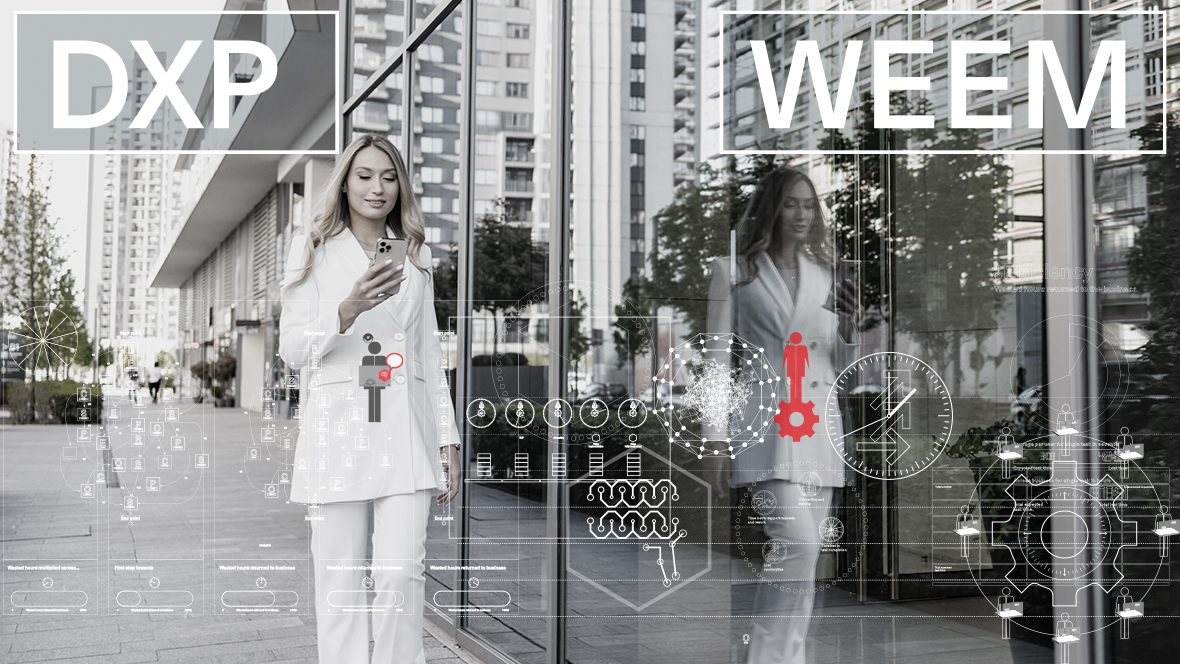What’s the difference between a WEEM platform and a DXP?
A Workplace Employee Experience Management (WEEM) platform focuses on improving the experience of internal employees within an organization, whilst a Digital Experience Platform (DXP) focuses on creating compelling and consistent digital experiences for external customers and partners across various digital channels.

A Workplace Employee Experience Management (WEEM) platform and a Digital Experience Platform (DXP) are both types of software solutions designed to enhance different aspects of an organization’s operations. While there can be some overlap in functionalities, they primarily focus on different areas of an organization’s digital ecosystem.
Workplace Employee Experience Management Platform:
- Focus: A WEEM platform is centered around creating a positive and productive work environment for employees. It aims to improve the overall experience of employees within the organization by addressing their needs, well-being, engagement, communication, and collaboration.
- Scope: A WEEM platform covers various aspects of the employee journey, including communication tools, collaboration features, learning and development resources, well-being initiatives, performance management, and more.
- Audience: The primary users of a WEEM platform are employees and managers within an organization. It focuses on optimizing the employee experience and fostering a positive work culture.
- Goals: The main goals of a WEEM platform are to boost employee engagement, satisfaction, productivity, and overall well-being. It aims to create an environment where employees are motivated, supported, and empowered.
Digital Experience Platform:
- Focus: A DXP focuses on creating seamless and engaging digital experiences for customers, partners, and users interacting with an organization’s digital channels, such as websites, mobile apps, and other online touchpoints.
- Scope: A DXP encompasses various components, including content management, digital marketing, personalization, analytics, e-commerce capabilities, and integration with other business systems.
- Audience: The primary users of a DXP are external stakeholders, including customers and partners. It aims to deliver a consistent and compelling digital experience that drives engagement, conversions, and loyalty.
- Goals: The main goals of a DXP are to enhance user engagement, deliver relevant content, optimize customer journeys, and facilitate interactions across digital platforms. It aims to build brand loyalty and provide value to external stakeholders.
